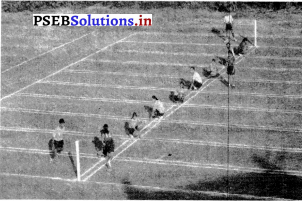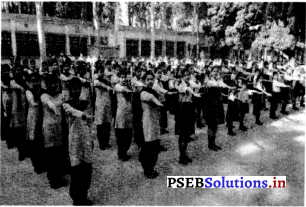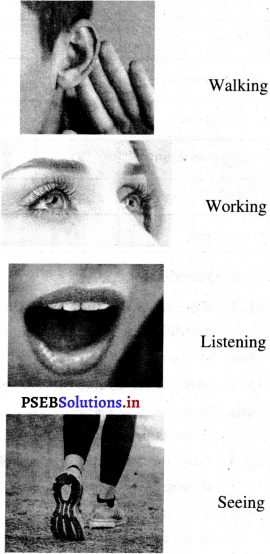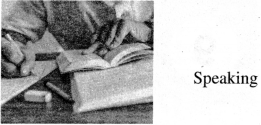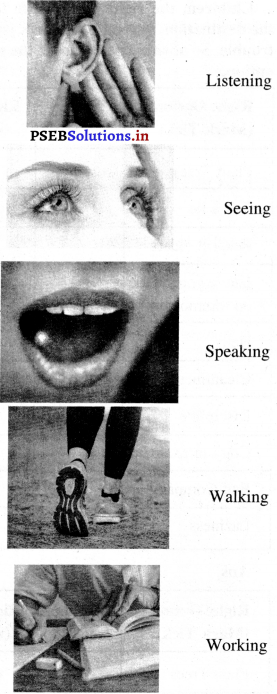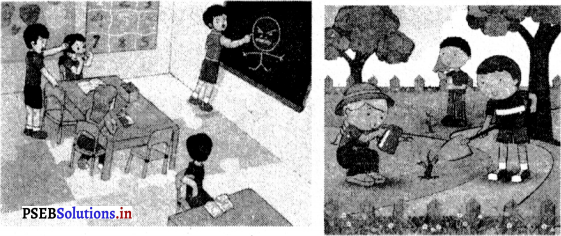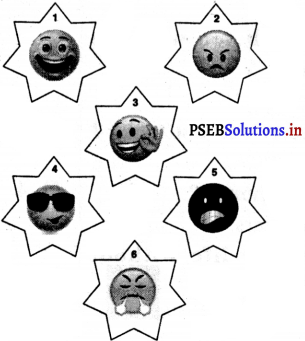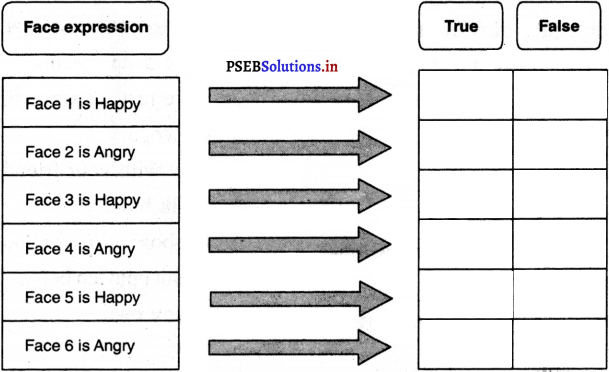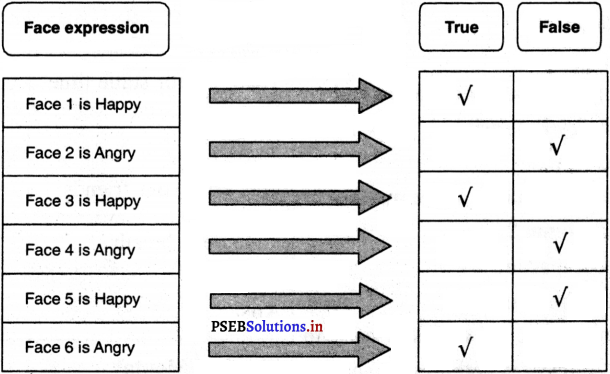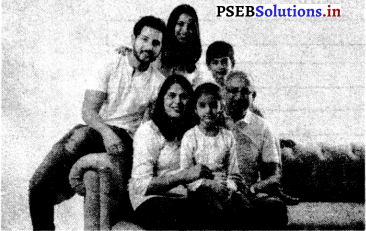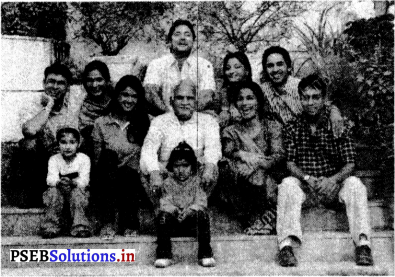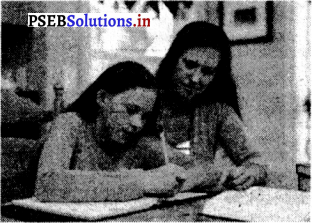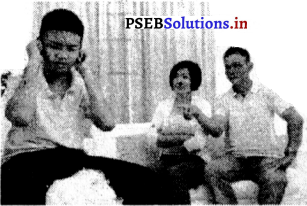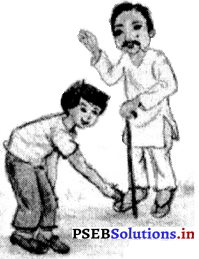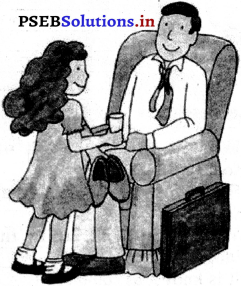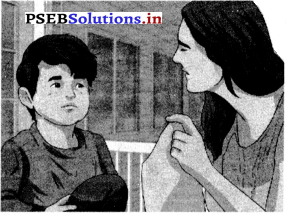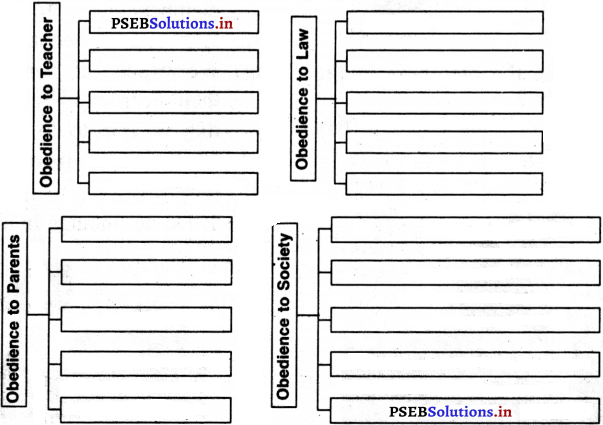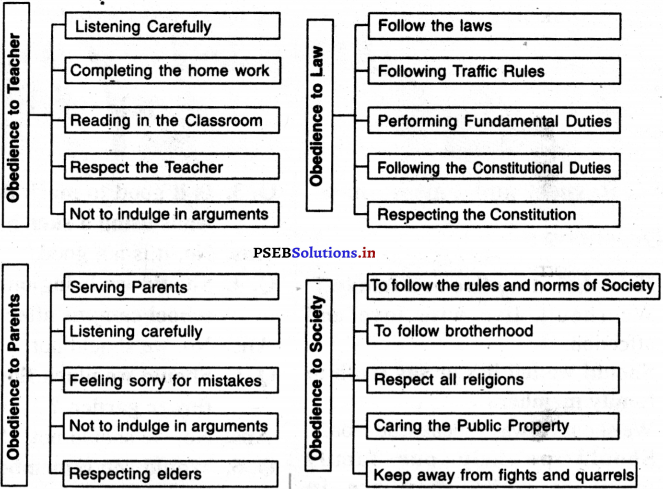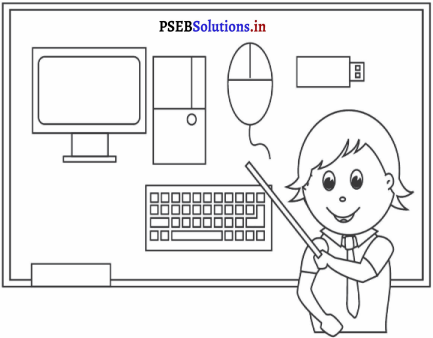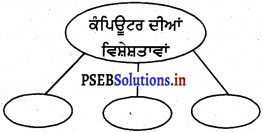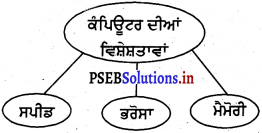Punjab State Board PSEB 4th Class Welcome Life Book Solutions Chapter 1 Health and Cleanlines Textbook Exercise Questions and Answers.
PSEB Solutions for Class 4 Welcome Life Chapter 1 Health and Cleanlines
Welcome Life Guide for Class 4 PSEB Health and Cleanliness Textbook Questions and Answers
A. What is Cleanliness?
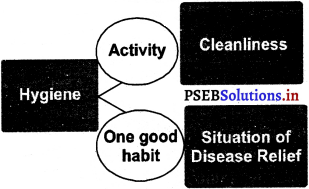
Question 1.
What do you mean by cleanliness?
Answer:
It is a protection circle, which saves us from diseases.

Question 2.
Why is there a need of cleanliness?
Answer:
- When there is cleanliness we feel happy.
- When there is cleanliness we remain healthy.
- Cleanliness provide us mental, physical, social and intellectual health.
Question 3.
How can we get cleanliness?
Answer:
- Take oath for cleanliness.
- Begin cleanliness from self.
- Take bath daily.
- Wear clean clothes.
- Clean your teeth twice a day.
- Wash your hands before and after taking meals.
- Run water after using washroom.
- After going to washroom wash your hands properly with soap and water.
Question 4.
Write points to make your environment clean?
Answer:
- We should keep our kitchen clean.
- We should eat fruits, vegetables after washing them.
- Keep water and eatables covered.
- Keep garbage in covered dustbin.
- Sweep and mop daily.
- Clean utensils properly.
- Keep your washroom clean properly
- Do not throw garbage here and there
- Keep your streets, roads clean.
- Plant ornamental and flowerin plants for beautification.
- Do not allow water to stagnate nea your surroundings.
- Spray mosquito repellents and alst spray oil on stagnated water.
- Do not allow weed and grass to grow in your surroundings.

Question 5.
Write things in different categories which should be clean?
| I |
My home |
My school |
My surroundings |
| *My body |
*Kitchen |
|
|
Answer:
| I |
My home |
My school |
My surroundings |
My body
Hair
Nails |
Kitchen
Washroom
Rooms and Lobby |
Ground
Washrooms
Surroundings of the school |
Streets
Roads
Neighbourhood |
Question 6.
Fill in the blanks :
(a) Cleanliness gives ………………………….. to mind.
(b) Cleanliness the state of being ………………………….. .
(c) Take ………………………….. for cleanliness.
(d) Begin cleanliness from …………………………..
Answer:
(a) happiness
(b) free form diseases
(c) oath
(d) self.

Oral Questions :
Question 1.
Whose cleanliness is must?
(a) self
(b) house
(c) surroundings
(d) all necessary.
Answer:
(d) all necessary.
Project
In your house and surroundings which areas are clean and which are not clean? Try to collect information about why the areas are not clean and find ways to clean them.
| House and surroundings |
Is it clean or not |
Reason |
Ways to make it clean |
|
|
|
|
Answer:
| House and surroundings |
Is it clean or not |
Reason |
Ways to make it clean |
| Washroom |
No |
It is not cleaned daily. |
Clean it daily and run water every time you use it and use toilet cleaner. |
| Kitchen |
It is clean. |
It is cleaned on daily basis. |
It is swept daily and mopped also. |
| Rooms |
These are clean. |
These are cleaned daily. |
Swept daily and mopped. Spider webs are also cleaned on weekly basis. |
| Street |
No |
People throw garbage in the street from then- houses. |
We should clean our surroundings at least near our house. |

B. I will not take eatables brought from market:
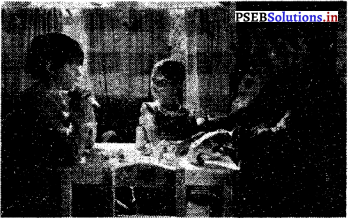
Question 1.
Students ! do you like to take food items in the festivals, marriages or brought from market?
Answer:
Yes, I like to take.
Question 2.
If market eatables are cooked with proper cleaning measures in clean environment, what will happen?
Answer:
We will not become ill after taking these food items.
On the basis of understanding you got from the story, prepare a list.
Question 1.
What and how much to eat?
Answer:
1. We should eat more fruits and that too by washing properly.
2. We should avoid packed food and if necessary take very less of it.
3. Do not consume uncovered eatables.
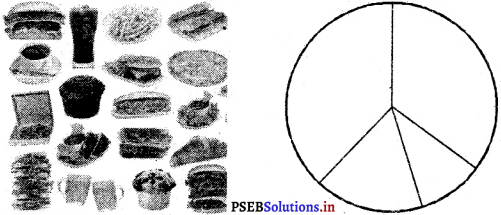

Oral Questions :
Question 1.
Ginni’s father was angry from :
(i) Ginni
(ii) Smosa
(iii) Ginni’s grandmother
(iv) The eatables brought from market.
Answer:
(iv) The eatables brought from market.
Question 2.
Why Ginni’s father got sick after eating gol-gappas?
(i) He ate them without washing his hands.
(ii) There were so many flies on the rehri.
(iii) There was lot of dust on the gol- gappas.
(iv) All the reasons are correct.
Answer:
(iv) All the reasons are correct.
Question 3.
What is the moral of the story?
(i) We should not eat smosas.
(ii) We should not eat in festivals.
(iii) We should not eat in the market.
(iv) We should eat after washing and cleaning our hands and food should be clean.
Answer:
(iv) We should eat after washing and cleaning our hands and food should be clean.

Question 4.
Write drinkable items.
Answer:
Tea, milk, sharbet, juice, cane juice etc.
Let’s fill these names in a box.
| Is it drinkable |
It is tasty/ not iasty |
What we get |
|
|
|
Answer:
| Is it drinkable |
It is tasty/ not tasty |
What we get |
| Water |
No |
It quenches our thirst. We can not live without water. |
| Milk |
Yes |
It gives us strength and makes bones strong. |
| Tea |
Yes |
Has harmful chemicals, which may cause cancer. |
| Coffee |
Yes |
Has harmful chemicals, which may cause cancer. |
| Cold soda |
Yes |
Has harmful chemicals, which may cause cancer. |
| Shikanjavi |
Yes |
Lemon has vitamin C which helps in digestion. |
| Lemon water |
Yes |
Lemon has vitamin C which helps in digestion. |
| Shake |
Yes |
Helps in making blood, increases our immunity. |
| Juice |
Yes |
Helps in making blood, increases our immunity. |
| Butter milk |
Yes |
Makes our bones strong. |
| Cane juice |
Yes |
Makes our liver strong. |

Question 5.
How do you find this activity?
Not good
★ |
Good
★ ★ |
Very good
★ ★ ★ |
Answer:
Good ★ ★
Question 6.
What did you get from this activity?
Answer:
We should choose drinkables which are healthy for us and not only for taste. Those things which are taken for taste only may make us sick.
Question 7.
Arrange the things from the above table in decreasing order on the basis of information you got from the activity.
……………> ……………> ……………>
……………> ……………> ……………>
……………> ……………> ……………>
Answer:
Milk > Cane Juice > Shikanjavi > Lemon Water > Water > Shake Tea > Coffee > Cold Drink.
I have understood
Oral Questions :
Question 1.
Which one has no taste but all drink it?
(a) Milk
(b) Juice
(c) Water
(d) Shikanjavi.
Answer:
(c) Water.

Question 2.
Which one will be better option in place of sharbet?
(a) Tea
(b) Coffee
(c) Shikanjavi
(d) Cold drink.
Answer:
(c) Shikanjavi.
Question 3.
What is food for infants?
(a) Tea
(b) Coffee
(c) Water
(d) Milk.
Answer:
(d) Milk.
Exercise and Health
Mind game :
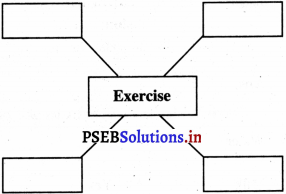
Answer:
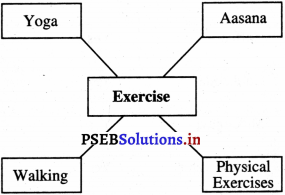

Question 1.
Write types of health.
Answer:
Physical and mental.
Question 2.
Write signs of physical health.
Answer:
Activeness, no diseases, elastic body.
Question 3.
Write signs of mental health.
Answer:
Good nature, intellectual development, good at studies.
Question 4.
I have noted some things to memorize, but some are left. Help me to complete these.
Exercise is very good for our health.
We can exercise in many ways.
eg. walking, ………………………
………………………
……………………… disease free body ………………………
……………………… tension ………………………
Answer:
Walking, yoga, aasanas, physical sports, gym etc.
We should exercise on daily basis.
If we exercise on daily basis we get a disease-free body.
Exercise helps in the release of tension and makes our mind relaxed.

Vocabulary related to exercise :
Answer:
| Health |
Tension free |
Weight lifting |
Yoga |
| Sit-ups |
Breathing exercise |
Walking |
Running |
| Hanging |
Chin-ups |
Sutra-netri |
Water-netri |
Activity :
Let us do these aasanas :

Answer:
Do it yourself.

Oral Questions :
Question 1.
In which sports arms exercise does not take place ?
(a) Cricket
(b) Kho-Kho
(c) Volleyball
(d) Badminton.
Answer:
(b) Kho-Kho.
Question 2.
In which game physical exercise does not take place ?
(a) Long Jump
(b) Ludo, Snake and Ladder
(c) Kabbadi
(d) Hopscotch.
Answer:
(b) Ludo, Snake and Ladder.
Question 3.
At what time doing exercise is more beneficial ?
(a) In the evening
(b) At noon
(c) Whenever we get time
(d) In the morning.
Answer:
(d) In the morning.
![]()
![]()
![]()
![]()

